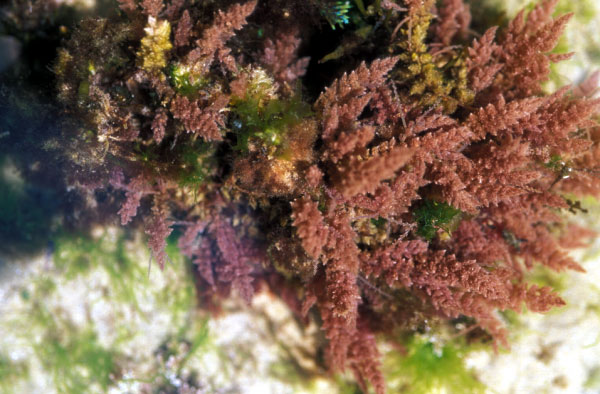Falkenbergia rufolanosa Harvey
Pale purplish-red, quickly degenerating when removed from the water and becoming distinctly orange; fronds bushy, with a cylindrical axis to1 mm wide and 200 mm long. Both phases readily reproduce vegetatively. Photographs by M.D. Guiry

SEAFOOD, BLUE JOBS, AND THE GREEN NEW DEAL
PROBLEM: Climate change, coastal development, and pollution are destroying America’s coastal marine ecosystems. Florida has lost over 50 percent of its coral reefs since 1996.20 Northern California has lost 93 percent of its kelp forest since 2013.21,22 Not only are our coastal ecosystems habitat for most seafood species at some phase of their life, but they also provide critical storm protection – wetlands prevented $625 million in damages during Hurricane Sandy and are often more effective and less expensive than seawalls.23 A concerted ecosystem restoration effort is needed to protect coastal areas, especially poor communities, communities of color, and Indigenous nations which are most at risk.
SOLUTION: Support state and national restoration programs, including replanting of seagrasses, wetlands, mangroves, shellfish, and seaweeds, perhaps funded by a blue carbon fund.


